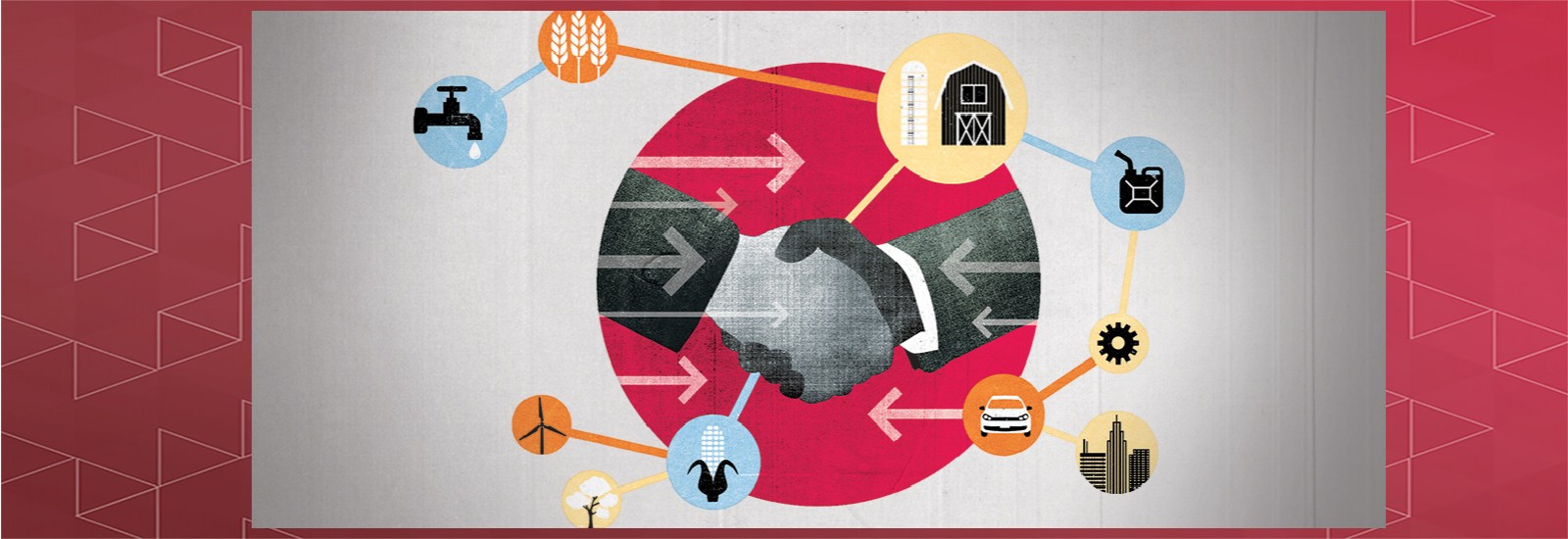Story by Kristen Schmidt / Ohio State Alumni Magazine / schmidt.1113@osu.edu
A three-year project that asks how the Midwest would be affected by varied trade scenarios is providing real-time data to help farms thrive — plus keeping land and water clean and safe.
Ohio State was founded in 1870 on the idea that universities should export their knowledge for the benefit of farming, industry and the greater good. The technology has changed, but the spirit hasn’t. One example: a three-year, $2.4 million project that involves researchers from three colleges and an advisory group of 25 stakeholders from five Midwestern states. Their goal: to create models that depict effects of big changes in trade policy on the Great Lakes region’s farming and water and energy systems.
“We hope it will be used in the public sphere to help decision makers,” says Elena Irwin, the project’s primary investigator, a professor in the College of Food, Agricultural and Environmental Sciences and faculty director of the university’s new Sustainability Institute. “What we really want to do is make this research relevant, make sure we’re asking the right questions from the outset.”
It’s pure coincidence that this project coincides with kinks in U.S.-China trade relations. Research began in January 2018, before both countries began imposing tariffs on billions of dollars in goods.
“We try to anticipate where the world is going or understand the consequences of decisions that are being made. This is a little different because it’s playing out at the same time we’re trying to do the work,” says Jeff Bielicki, a researcher on the project and associate professor in the College of Engineering and the John Glenn College of Public Affairs.
“Things are changing so fast, it can be difficult to decide on a baseline to use for the ‘business as usual’ scenario,” says Doug Jackson-Smith, another project faculty member and professor in the School of Environment and Natural Resources. “Our research team has collaborated with regional stakeholders to identify the range of future scenarios that are realistic, but also represent different ways that things may unfold in the coming years.”
Bielicki and Jackson-Smith are involved in the Sustainability Institute as well. Bielicki is on the Faculty Advisory Board and is co-lead of the sustainable energy research area, and Jackson-Smith is an affiliated faculty member.
In addition to scholarly articles, the endgame for this research, funded by the National Science Foundation, includes frequent reporting to stakeholders, who can apply findings to their work in agriculture, water and energy.
For the researchers, this project epitomizes the way Ohio State lives its land-grant mission and illustrates the ways in which researchers’ individual strengths multiply when they come together.
“I like highly collaborative things, Bielicki says, “and this is the most integrative and collaborative work I’ve been involved in.”
Read this article and more in the Sesquicentennial Issue of the Ohio State Alumni Magazine. Other sustainability-related articles in the issue:
* Bumper crop: Explore Ohio State’s Waterman Agricultural and Natural Resources Laboratory, and discover research and a rural classroom on an urban campus.
* Meeting the world’s challenges: Ohio State researchers and students are solving large-scale problems, including those related to sustainability and water quality, to improve the world around us.
* Smart moves: Discover how Ohio State is helping define what it means to be a smart city and campus in the 21st century, harnessing data and technology to improve lives.
